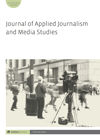
Full text loading...
 , Yufan Sunny Qin1
, Yufan Sunny Qin1
The increasing use of social media has led to the growing reliance of social media as a news source. The viral nature of social platforms inevitably elevates the viral impact of fake news. As both academia and practitioners touted media literacy as a means of combating fake news or misinformation, little is known about the nature of relevant efficacies. Existent literature points to the plausible contribution of media consumption, self-efficacy of fake news and perceived impact of fake news in this process. Therefore, this study explored the relationship between consumers’ news consumption, such as fake news experiences/perceptions, news sources and news consumption motives; and fake news perceptions like self-efficacy and impacts. This study conducted an online survey to examine the proposed hypotheses and research questions. The findings suggest that consumers’ previous experiences and consumption motives are connected with their perceived effects and efficacy of fake news. In addition, different news sources (i.e. mainstream media and social media) exert diverse effects on fake news self-efficacy.

Article metrics loading...

Full text loading...
References


Data & Media loading...

Publication Date:
https://doi.org/10.1386/ajms_00041_1 Published content will be available immediately after check-out or when it is released in case of a pre-order. Please make sure to be logged in to see all available purchase options.